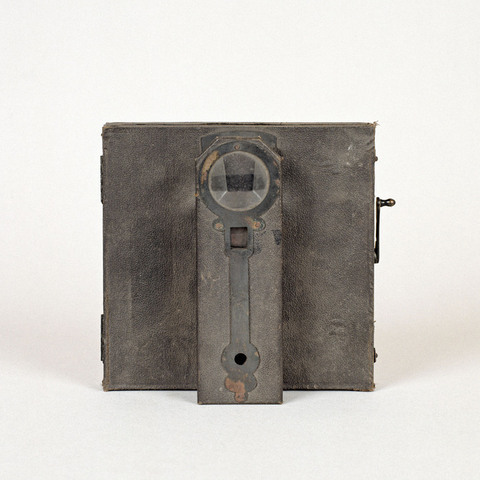Caméra réversible à disque en papier
Fiche détaillée
Type de l'appareil
boîtier en bois gainé de cuir ; disque 12 cm Ø ; mouvement intermittent à lame d'acier fine, bloquée puis relâchée sur une circonférence de pointes métalliques ; disque obturateur à huit fentes ; optiques de prise de vues et de visionnement montées sur support pivotant
Auteurs
Brown Theodore
Londres
Fabricants
The Kinokam Company
Londres, Savoy House, 115 Strand
Utilisateurs
Brown Theodore
Londres
Distributeurs
Informations non disponibles
Sujet du modèle
Informations non disponibles
Objectif
2 lentilles 3,2 et 0,5 cm Ø
Taille de l'objet
Ouvert :
Informations non disponibles
Fermé :
Longueur : 5.5 cm
Largeur : 15 cm
Hauteur : 15 cm
Diamètre :
Informations non disponibles
Taille de la boîte de transport
Informations non disponibles
Remarques
Etiquette "The Kinokam Patented".
"On the top side is an oblong block, which contains the photographic lens, the finder, and also a magnifying glass. The latter is so arranged that the block which holds it can be turned around and the camera immediately converted into a viewing machine. The shutter is removed, and the print of the picture which has been taken, when placed on the mechanism inside, can be revolved by the little handle and, by looking through the magnifying glass, the pictures are enlarged and brought out clearly, showing the movements of the object which has been "Kinokamed". A very important feature of the Kinokam is that the picture is taken and reproduced again on the same machine. No extra mechanism is necessary. There is no limit to the subjects that can be taken on this machine, each disc film allowing twenty-four exposures, the object being taken in a variety of movements or twenty-four snapshot can be taken on one film, and when developed, the magnifying glass enlarges the pictures and brings them out clearly with surprising detail in an animated form" (The Optical Lantern and Cinematograph Journal, février 1906, pp. 75-77).
Bibliographie
The Optical Lantern and Cinematograph Journal, février 1906, pp. 75-77.
